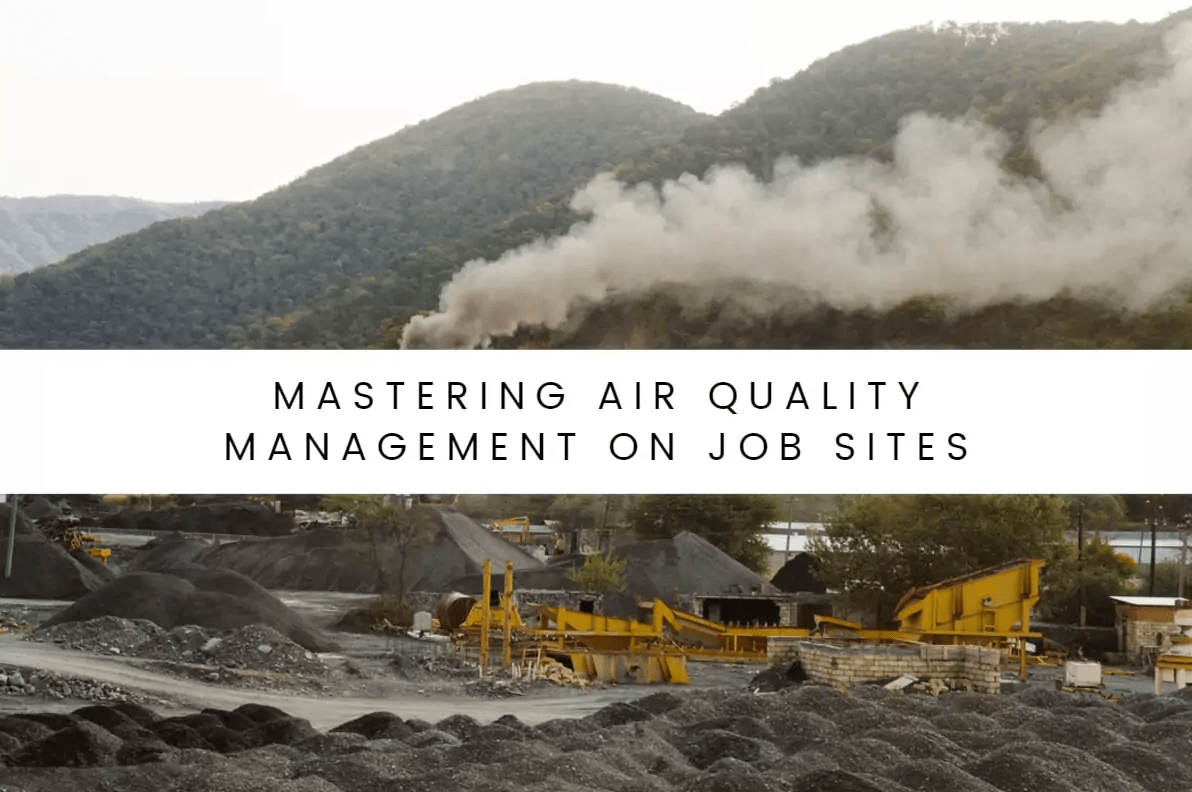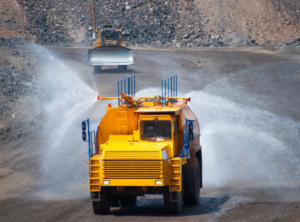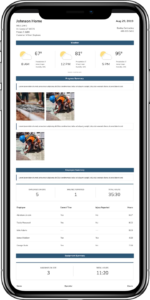
Air quality is often overlooked when creating a safe and productive work environment. Whether it’s a bustling construction site or a manufacturing facility, poor air quality can have significant consequences for workers’ health and the overall efficiency of operations. From dust and chemicals to fumes and allergens, job sites can present a myriad of airborne hazards.
Fortunately, managing air quality on job sites can be easy with proper planning, a few proactive measures, and a focus on implementing effective strategies. This guide will explain how to protect the air your team breathes, ensuring a healthier and more sustainable workplace. So, let’s begin the journey toward cleaner, fresher air that fosters optimal well-being and productivity for everyone on your job site.
How To Manage Air Quality On Job Sites
Causes of poor air quality
Natural disasters
There are various contributors to poor air quality, including both natural and man-made factors. Wildfires, volcanic eruptions, dust storms, and hurricanes release pollutants that can spread for miles and miles, affecting the air we breathe. These natural disasters play a significant role in deteriorating air quality on local and regional scales.
Man-made pollutants
Man-made pollutants are substances that are released into the atmosphere as a result of human activities. The leading causes of man-made air pollution are vehicle exhaust, heating fuels like oil and natural gas, waste from manufacturing and power plants (especially those fueled by coal), and emissions from chemical production.
Finding the air quality index in your area
The hazards employees encounter can differ significantly depending on the location, but many sectors and work environments must address similar health risks. Every construction project produces dust, such as when soil is displaced, holes are drilled, materials are cut, or people walk around.
Find your state’s Air Quality Index to address your site safety specifically to you.
8 ways supervisors can improve air quality and ensure job site safety
Promote awareness and training
Ensure that workers know the importance of air quality and understand the potential sources of pollutants in their work environment. Conduct regular training sessions to educate employees about best practices, proper handling of chemicals, and using personal protective equipment (PPE) to minimize emissions and exposure.
Become LEED certified
LEED, which stands for Leadership in Energy and Environmental Design, represents a renowned program for certifying environmentally friendly construction. It sets the benchmark worldwide for creating, building, and maintaining high-performance green structures and communities, emphasizing energy efficiency and sustainability.
How to become LEED certified as a contractor 
Implement emission control measures
This can include adopting cleaner technologies, upgrading equipment to meet emission standards, and implementing maintenance programs to keep machinery in optimal condition.
Optimize ventilation
Ensure adequate ventilation systems are in place to remove pollutants from indoor environments. Regularly inspect and maintain ventilation systems, including filters and exhaust systems, to ensure they operate efficiently. Consider further use air purifiers or air filtration systems to improve indoor air quality.
Monitor and control dust
Develop and enforce measures to control dust and particulate matter on job sites. This may include using dust suppression techniques like water sprays, covering materials, or implementing dust control systems. Regularly clean work areas and equipment to minimize the accumulation and dispersal of dust.
Implement daily reports with weather reporting
Using a construction time tracking app that includes weather updates will improve productivity and safety on the job site. Make informed decisions based on real-time weather conditions to reduce job site injuries.
Enforce proper waste management
Supervisors should establish proper waste management protocols to prevent the release of pollutants into the air. This includes separating and storing hazardous materials appropriately, ensuring proper disposal of chemicals and waste products, and adhering to regulations related to the handling and disposal of pollutants.
Encourage sustainable transportation
Encourage employees to use alternative transportation methods, such as carpooling, public transportation, or biking, to reduce vehicle emissions. If feasible, provide incentives for eco-friendly commuting practices and promote the use of electric or hybrid vehicles within the organization.
What can employees do to improve air quality?
Supervisors are crucial in ensuring employees’ safety by monitoring and prioritizing air quality based on the recommendations above. However, employees can also actively contribute to improving air quality on the job site.
Advocating for and supporting companies that prioritize air quality goals is essential. We understand that engaging in difficult conversations with supervisors can be intimidating, especially if you are concerned about being perceived as weak or overly sensitive in that particular work environment.
In conclusion
Prioritizing air quality management on job sites is essential for creating a safe and productive work environment. By implementing effective strategies and proactive measures, such as promoting awareness and training, becoming LEED certified, optimizing ventilation, monitoring and controlling dust, enforcing proper waste management, and encouraging sustainable transportation, employers can ensure that their team breathes cleaner air and enjoys a healthier workplace.
Additionally, employees can play a role by supporting companies’ efforts to improve air quality and advocating for their well-being.
By addressing air quality concerns, we can foster optimal well-being and productivity for everyone on the job site. Let’s make cleaner, fresher air a reality and breathe easy on every project.













